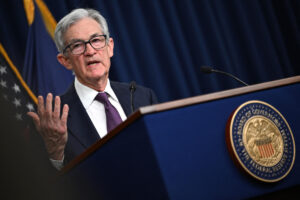Inflation Insights: December CPI Data Signals Progress
Recent data released by the Bureau of Labor Statistics highlights a slight easing in inflation metrics, grabbing the attention of investors and policymakers alike. For the first time since July, a key inflation indicator showed signs of deceleration, marking a potential turning point in economic trends.
In December, the core Consumer Price Index (CPI)—which excludes the more volatile categories of food and energy—rose by 0.2% compared to the previous month. This is a decrease from November’s 0.3% gain, bringing the annual change down to 3.2%. Notably, prior to December, the core CPI had remained constant at a 3.3% annual growth for four consecutive months. This reduction marks the first year-over-year deceleration in core CPI since July, indicating a potential cooling in inflation pressures.
This data arrives as the Federal Reserve gears up for its upcoming interest rate meeting. The market appeared to react positively to these figures; stocks rallied, and the yield on the 10-year Treasury fell 12 basis points, dipping below 4.7%. As an added perspective, Raymond James chief economist Eugenio Aleman noted that the Federal Reserve remains tolerant of temporary increases in the headline CPI, provided it does not affect the core CPI, which is precisely what transpired in December.
Headline vs. Core CPI: What’s Driving Inflation?
The headline CPI, which encapsulates a broader array of expenses, saw a year-over-year increase of 2.9% in December, up from November’s 2.7% annual gain. The index also rose by 0.4% month-over-month, aligning with economists’ expectations. This increase was driven by seasonal factors, including higher fuel prices and persistent food inflation.
The core inflation rates have been particularly affected by rising costs for shelter and essential services such as medical care and insurance. In fact, used car prices also surged by 1.2% in December, continuing a trend of rising prices in this sector for the third month in a row.
Despite this slowdown in overall inflation, it’s critical to note that the annual rate still exists above the Federal Reserve’s target of 2%. According to Claudia Sahm, chief economist at New Century Advisors, while there is variability in inflation patterns, the trend is moving in the right direction. She describes the current climate as one of cautious optimism, emphasizing the Fed’s approach of taking a wait-and-see stance regarding inflation developments.
Key Components of Inflation
Several categories within the CPI are worth highlighting for their significant contributions to the inflation picture:
-
Shelter Index: This rose by 4.6% on an unadjusted annual basis—slightly down from November’s 4.7%. This statistic represents the smallest annual increase since January 2022 and is a key driver of core inflation.
-
Energy Prices: Energy costs saw a notable increase of 2.6% month-over-month, with gas prices spiking by 4.4% in December, significantly affecting consumer budgets.
- Food Prices: The food index increased by 2.5% year-over-year, with month-over-month prices rising by 0.3%. Notably, egg prices illustrated a dramatic rise of 37% over the past year, with a monthly increase of 3.2% continuing the trend of elevated grocery prices.
Looking Ahead: The Impact of Policy Changes
Economic forecasts are being adjusted amidst upcoming political movements, particularly with the incoming administration of President-elect Donald Trump. His proposed policies—including high import tariffs and tax cuts for corporations—could introduce further inflationary pressures. Predictions suggest these factors will complicate the Federal Reserve’s decisions on interest rates moving forward.
As we delve deeper into 2024, investors should monitor how these economic indicators interact with federal policies. A more comprehensive understanding of the ongoing inflation trends, alongside potential interest rate adjustments, will be crucial for strategic financial planning.
For more deep dives into current financial trends and what they mean for your investments, keep following us at Extreme Investor Network, where we analyze not just what’s happening, but why it matters for your financial future.

